Unlock Growth: Top Tips for Successful Cannabis Breeding
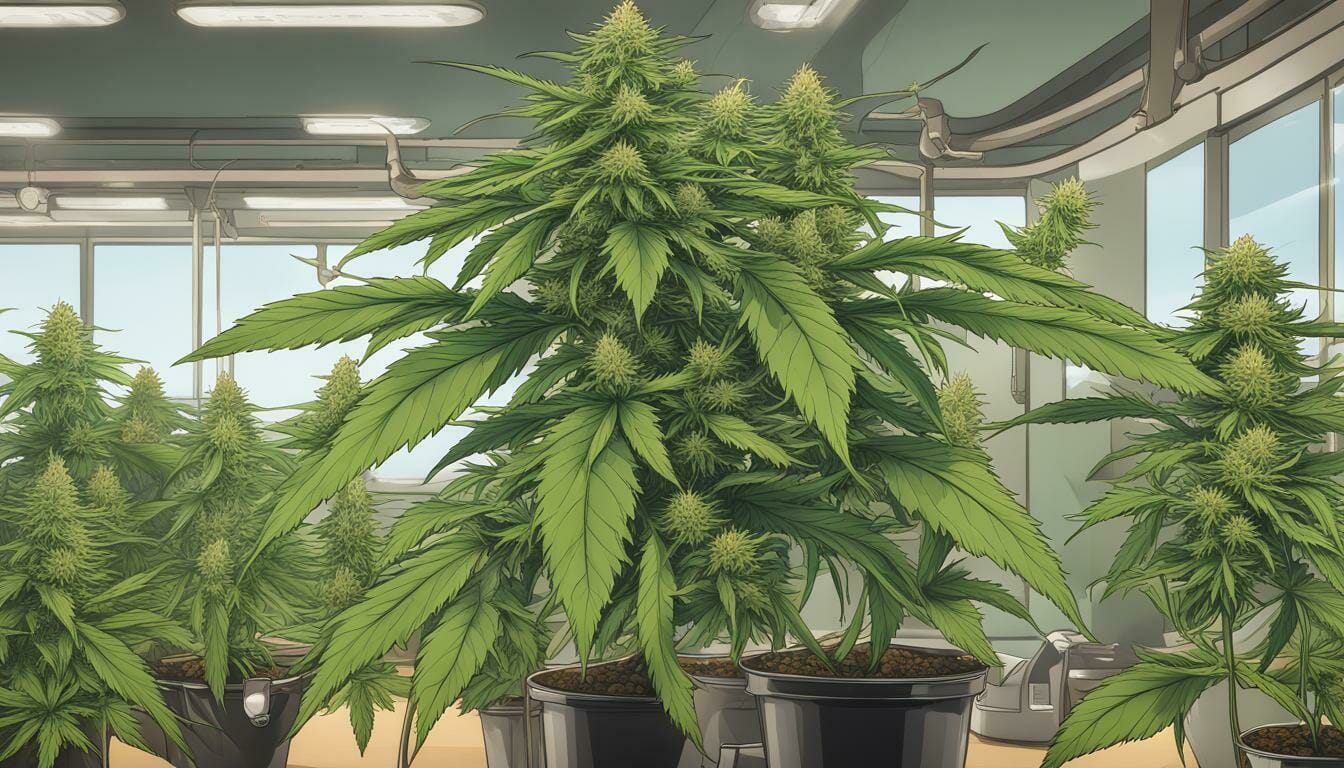
Welcome to our guide on successful cannabis breeding techniques. Whether you’re a novice or seasoned breeder, understanding the basics and implementing effective techniques can maximize yield and quality. Breeding cannabis plants is a complex and rewarding process that requires patience, dedication, and attention to detail. In this article, we’ll cover the key tips and tricks for successful cannabis breeding, from selecting the right parent plants to controlling environmental factors and more.
Key Takeaways:
- Successful cannabis breeding can increase yield and quality.
- Understanding the fundamentals, selecting the right parent plants, and utilizing effective breeding methods are essential.
- Patiently tracking progress, implementing quality control and testing, and staying motivated are key traits for successful breeders.
Understanding the Basics of Cannabis Plant Breeding
Successful cannabis breeding starts with understanding the basic principles of genetics and selecting the right parent plants. Breeding cannabis strains can be both an art and a science, but with the right techniques and knowledge, it can be a rewarding experience.
Genetics is Key
When it comes to cannabis plant breeding, genetics is everything. The characteristics of the parent plants determine the traits of the offspring, so it’s important to choose plants with desirable genes. This means considering factors such as the plant’s potency, yield, and resistance to pests and diseases.
Selecting Parent Plants
When selecting parent plants for breeding, it’s important to consider not only their genetic traits but also their overall health. Healthy plants produce healthy offspring, so choose plants that are free from pests and diseases, and with strong root systems.
Another important factor to consider is genetic stability. A plant with stable genetics means that its offspring will have a consistent set of characteristics, making it easier to predict the outcome of the breeding process.
Breeding Methods and Techniques
There are several methods and techniques for breeding cannabis plants, including traditional breeding, hybridization, and advanced techniques like tissue culture and genetic manipulation. Each method has its advantages and disadvantages, so it’s important to choose the method that best suits your goals and resources.
Traditional breeding involves crossbreeding two plants with desirable traits to create offspring with a combination of these traits. Hybridization involves crossing two plants from different species to create a new hybrid strain. Advanced techniques like tissue culture and genetic manipulation can be used to produce clones of desired plants or create new strains with specific genetic traits.
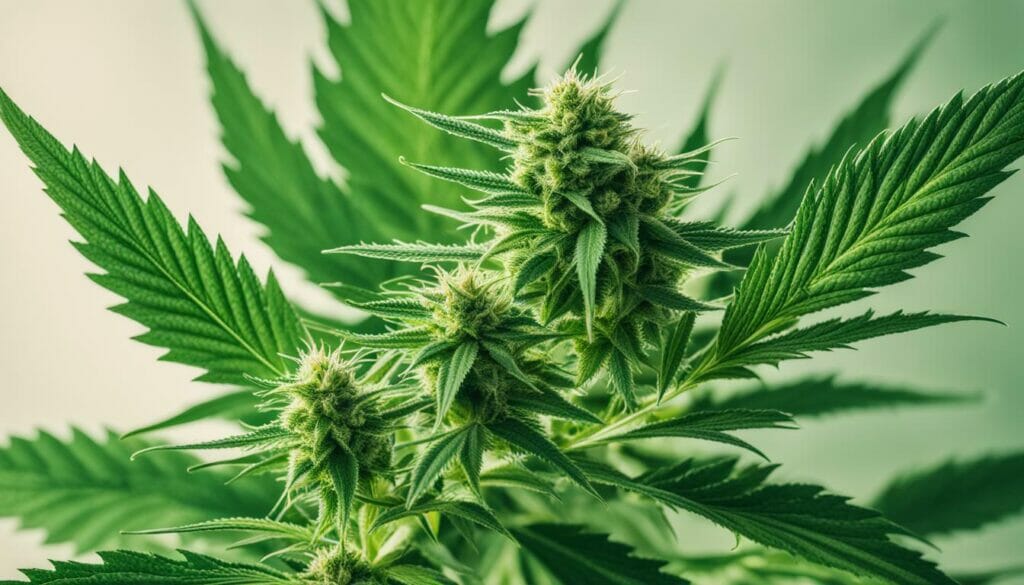
Selecting the Right Parent Plants
Choosing the best parent plants is essential for successful cannabis breeding. When selecting parent plants, you should consider various factors, including desired traits, genetic stability, and overall plant health. Here are some tips for selecting the right parent plants:
| Factor | Tips |
|---|---|
| Desired traits | Identify the specific traits you want to incorporate into your new strain, such as high THC levels or a particular flavor profile. |
| Genetic stability | Choose parent plants that have stable genetics and are less likely to produce hermaphroditic offspring. |
| Plant health | Select parent plants that are healthy, free of disease, and have no signs of nutrient deficiencies. |
It’s also essential to ensure that your parent plants are well-suited for breeding. Ideally, you should choose plants that have a high yield and grow well in your specific environment. By selecting the right parent plants, you can increase your chances of producing high-quality, high-yield cannabis strains.
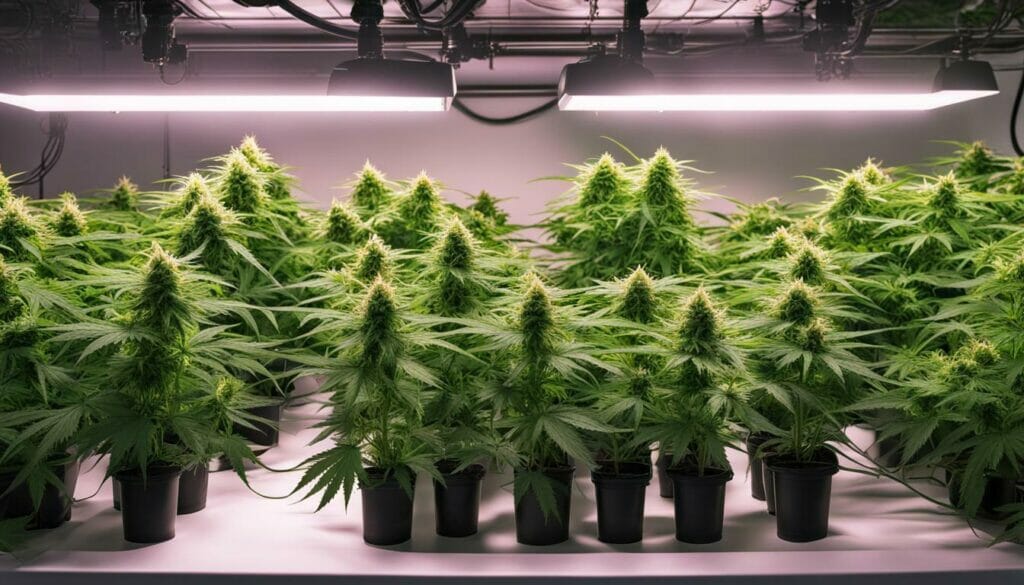
Breeding Methods Explained
Cannabis breeding involves a variety of methods and techniques that can be used to create new strains with unique characteristics. Here are some of the most common methods and techniques used in cannabis breeding:
Traditional Breeding
Traditional breeding involves selecting two parent plants with desirable traits and crossbreeding them to create a new strain. This method relies on natural genetic variation and can take several generations to achieve the desired traits.
Hybridization
Hybridization involves crossbreeding two different strains to create a new hybrid strain with unique qualities. This method can be used to create strains that have higher yields, unique flavors, and different cannabinoid profiles.
Tissue Culture
Tissue culture involves taking a small tissue sample from a plant and growing it in a sterile environment. This method allows breeders to create genetically identical clones of a single plant, which can be used to create large quantities of a desired strain.
Genetic Manipulation
Genetic manipulation involves altering the DNA of a plant to create desired traits. This method is still in its early stages in the cannabis industry but has the potential to revolutionize breeding by allowing breeders to create strains with specific characteristics.
Each of these methods has its own advantages and drawbacks, and successful breeders often use a combination of methods to achieve their desired results.

Maximizing Genetic Variation
One of the key elements of successful cannabis breeding is maximizing genetic variation. This not only helps to produce unique strains with desirable traits, but also ensures genetic stability and resilience. Here are some tips for maximizing genetic variation in your breeding projects:
- Controlled pollination: One of the most effective ways to maximize genetic variation is through controlled pollination. This involves carefully selecting parent plants with desirable traits and hand-pollinating them to produce controlled crosses. By controlling the pollination process, you can ensure that only the desired genetics are passed on to the offspring.
- Seed selection: Another way to maximize genetic diversity is through seed selection. By selecting seeds from a diverse range of parent plants, you can increase the chances of obtaining unique and desirable traits in the offspring.
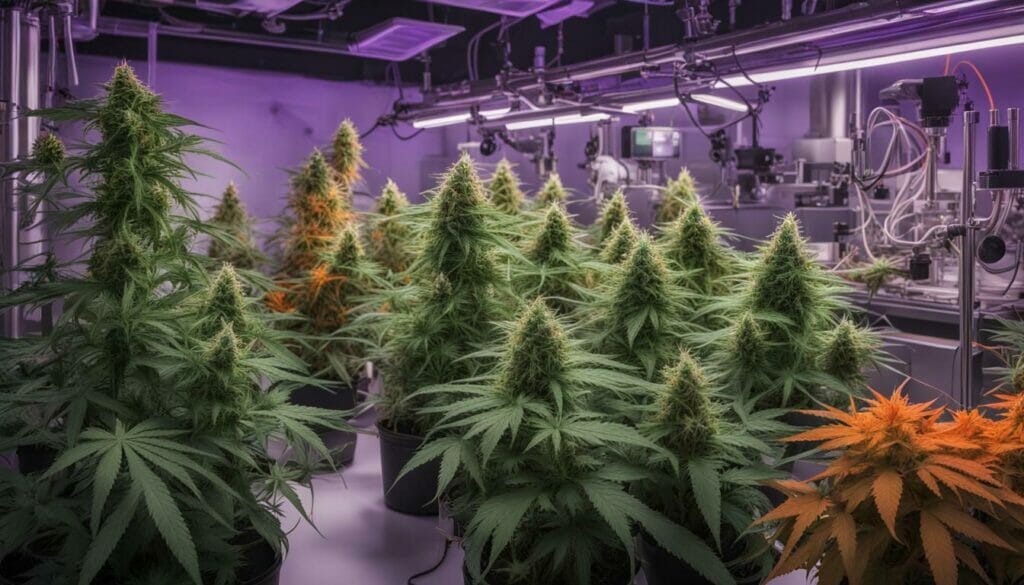
It’s important to note that while maximizing genetic variation is important, it’s also essential to maintain genetic stability and consistency in your breeding projects. This can be achieved through careful selection of parent plants and rigorous testing of the offspring.
Controlling Environmental Factors
Controlling environmental factors is crucial for successful cannabis breeding. Temperature, humidity, and light cycles must be optimized to ensure healthy plant growth and maximize yield.
During the breeding process, it is essential to keep the plants in a controlled environment to avoid any contamination from foreign pollen. If the plants are exposed to pollen from unknown sources, the genetic makeup of the resulting seeds will be uncertain.
When it comes to temperature, cannabis plants thrive in a range of 20-30°C (68-86°F). Any temperature outside this range can cause stress and negatively affect plant growth. In particular, the plant’s development and sex expression are strongly influenced by temperature, making it a critical factor in successful breeding.
Humidity is another crucial factor to consider. High humidity levels can increase the risk of mold and mildew, while low humidity levels can cause the plants to dry out and adversely affect their growth. Ideally, the humidity level should be kept between 50-60% during the vegetative stage and between 40-50% during the flowering stage.
Finally, light cycles play a vital role in cannabis plant growth and development. During the vegetative stage, a light cycle of 18 hours on and 6 hours off is recommended, while during the flowering stage, a light cycle of 12 hours on and 12 hours off is preferred. Any interruption in light cycles can disturb the plant’s natural rhythm and negatively impact yield and quality.
To achieve optimal environmental conditions, consider using a grow tent or grow room with a high-quality ventilation system. This will help maintain the ideal temperature, humidity, and light cycles while also preventing any contamination from external sources.
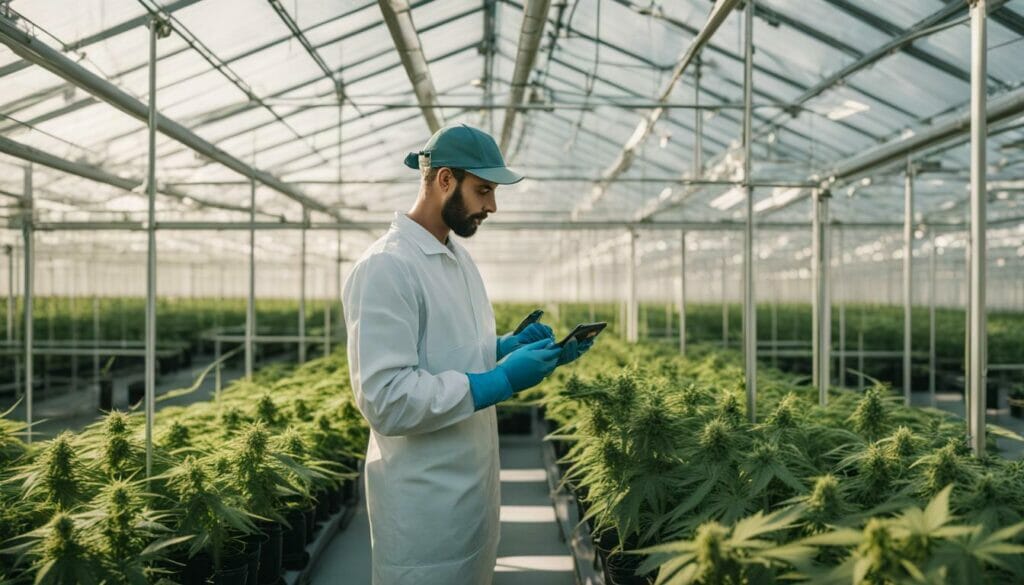
Remember, controlling environmental factors is essential for successful cannabis breeding and achieving high-quality, high-yield plants.
Tracking and Documenting Progress
Tracking and documenting progress is essential for successful cannabis breeding. It allows breeders to monitor genetic information, crossbreeding experiments, and phenotypic traits. By keeping detailed records, breeders can make more informed decisions about which plants to select for future breeding projects.
When starting a breeding project, it is important to establish a baseline for the genetics of the parent plants. This can be done by performing DNA tests or simply taking notes on traits such as growth pattern, leaf shape, and aroma. Breeders should also document the date of the crossbreeding experiment, the number of seeds produced, and any abnormalities observed during the breeding process.
As the breeding project progresses, breeders should continue to document their observations. This includes tracking plant growth, flowering time, and overall health. It is also important to keep track of any mutations or other changes that occur during the breeding process.
To streamline the process of tracking and documenting progress, breeders can use specialized software or spreadsheets to record data. This allows for easy comparison of different breeding projects and can help identify trends and patterns in genetic information.
Overall, tracking and documenting progress is key to successful cannabis breeding. By keeping detailed records and monitoring genetic information, breeders can maximize their chances of producing high-quality, genetically stable strains.

Quality Control and Testing
Successful cannabis breeding doesn’t stop with selecting parent plants and creating new strains. Quality control and testing are crucial steps to ensure that your hard work pays off in the form of high-quality, potent cannabis.
Lab Testing
One of the most important aspects of quality control is lab testing. This involves analyzing THC and CBD levels, as well as other cannabinoids and terpenes, to ensure the potency and overall chemical profile of the strain meet your expectations.
| Tip: | Work with a reputable lab to ensure accurate results and look for labs that are certified by organizations like the International Organization for Standardization (ISO). |
|---|
Terpene Analysis
Terpenes are the aromatic compounds responsible for the distinct smells and flavors of cannabis. Analyzing the terpene profile of your strains can help ensure that they have the desired scent and taste, as well as provide an indication of their potential effects and medical benefits.
Plant Health
It’s also important to assess the overall health of your plants, both during the breeding process and after. Keep an eye out for signs of pest or disease damage, as well as nutrient deficiencies, which can impact the quality and potency of your final product.
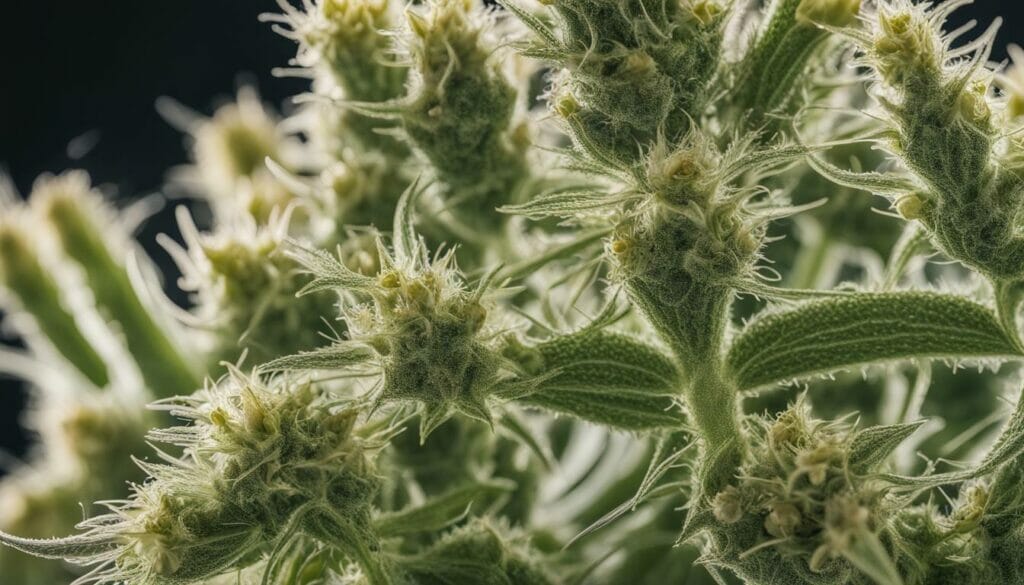
Tip: Regularly inspect your plants and conduct soil and tissue tests to ensure they have the nutrients and environmental conditions they need to thrive.
Patience and Persistence: Key Traits for Successful Breeders
Cannabis breeding is not a quick process. It takes time, dedication, and a lot of patience and persistence. Many breeders spend years developing and perfecting their strains, sometimes starting with nothing more than a single seed. It can be a frustrating and discouraging process, but the rewards can be significant.
One of the keys to successful breeding is having a clear understanding of the process and being prepared for the long haul. It’s important to set realistic goals and expectations, and to be willing to put in the time and effort required to achieve them.
Another important trait for successful breeders is persistence. Breeding cannabis plants can be a complex and challenging process, and setbacks are common. It’s important not to become discouraged when things don’t go as planned, and to keep moving forward with your breeding projects.
In addition to patience and persistence, successful breeders also need to be flexible and adaptable. Cannabis breeding is a constantly evolving field, and new techniques and technologies are emerging all the time. Breeders who are willing to learn and experiment with new methods are more likely to succeed in the long run.
Finally, successful breeders need to have a deep passion and dedication for what they do. Breeding cannabis plants is not just a job or a hobby–it’s a lifestyle. It requires a deep love and appreciation for the plant, as well as a commitment to ongoing learning and growth.
So if you’re thinking about getting into cannabis breeding, remember to be patient, persistent, flexible, and passionate. With these traits, and the right techniques and strategies, you can become a successful and respected breeder in this exciting and rapidly growing industry.
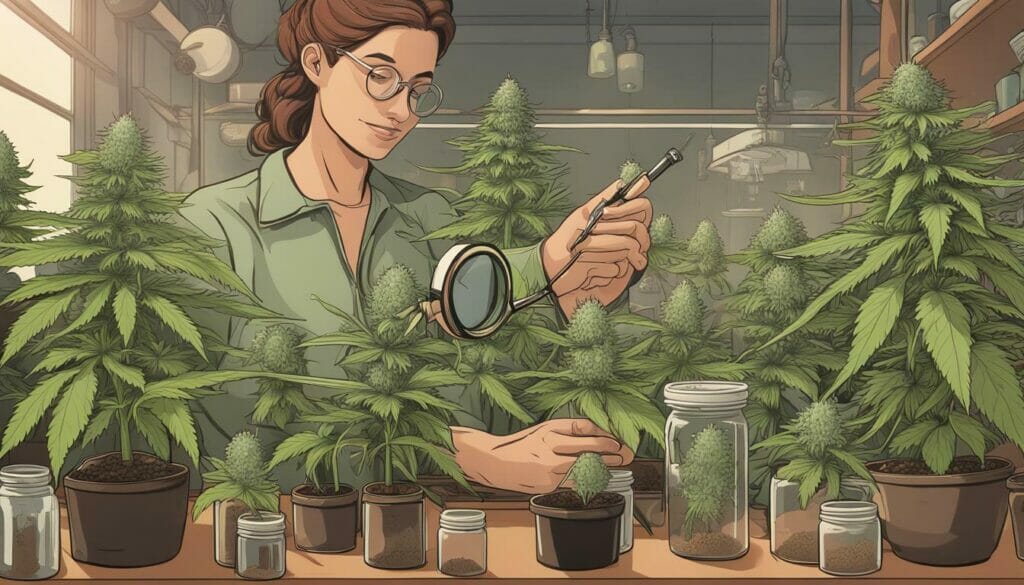
Section 10: Conclusion
Effective cannabis breeding is fundamental to achieving a successful, profitable and productive cannabis cultivation business. Breeding high-quality cannabis can significantly enhance your yields, create new genetic varieties, and increase profits. By implementing the tips and techniques covered in this article, you can unlock the potential for growth in your cannabis breeding projects.
Remember to start by understanding the basics of cannabis breeding, selecting the right parent plants, and maximizing genetic variation. Employing the correct breeding methods and controlling environmental factors can also significantly enhance breeding success. Keeping detailed records, testing, and implementing quality control are also essential steps. Lastly, be patient, persistent, and passionate as successful breeding requires time, dedication, and hard work.
Takeaways, Tips, and Best practices:
- Understand the basics of cannabis breeding, selecting parent plants, and genetic variation.
- Implement the correct breeding methods and control environmental factors.
- Track and document your breeding progress.
- Ensure quality control and testing are an integral part of your breeding process.
- Be patient, dedicated, and passionate about your cannabis breeding projects.
By following these tips and best practices, you can achieve success and unlock the full potential of your cannabis breeding program.
FAQ
Q: What is cannabis breeding?
A: Cannabis breeding is the intentional process of crossing different strains of cannabis plants to create new genetic combinations with desired traits.
Q: Why is successful cannabis breeding important?
A: Successful cannabis breeding is important because it allows breeders to maximize yield and quality, creating strains that meet specific needs and preferences.
Q: How do genetics play a role in cannabis breeding?
A: Genetics play a crucial role in cannabis breeding as they determine the traits and characteristics that will be passed down to offspring.
Q: What are some breeding methods and techniques used in cannabis breeding?
A: Some breeding methods and techniques used in cannabis breeding include traditional breeding, hybridization, tissue culture, and genetic manipulation.
Q: How can I select the right parent plants for breeding?
A: When selecting parent plants for breeding, consider desired traits, genetic stability, and overall health of the plants.
Q: How can I maximize genetic variation in cannabis breeding?
A: To maximize genetic variation, controlled pollination and careful seed selection are important practices to follow.
Q: What environmental factors should I consider during the breeding process?
A: Controlling factors such as temperature, humidity, and light cycles is crucial for successful breeding and maintaining optimal conditions.
Q: How should I track and document progress in cannabis breeding?
A: It is important to keep detailed records of genetic information, crossbreeding experiments, and phenotypic traits to effectively track progress in breeding projects.
Q: Why is quality control and testing important in cannabis breeding?
A: Quality control and testing ensure the overall health of the plants and help breeders analyze THC and CBD levels, terpene profiles, and other important factors.
Q: What traits are key for successful breeders?
A: Patience and persistence are key traits for successful breeders, as breeding projects often require time, dedication, and continuous motivation.
Suggested Articles
;)
;)
;)



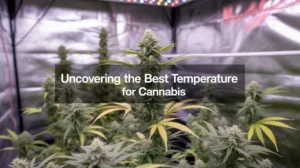
 17 Dec 2025
17 Dec 2025  7 min read
7 min read


 September 22, 2023
September 22, 2023 


RESPONSES (0)
No responses yet. Be the first to respond!